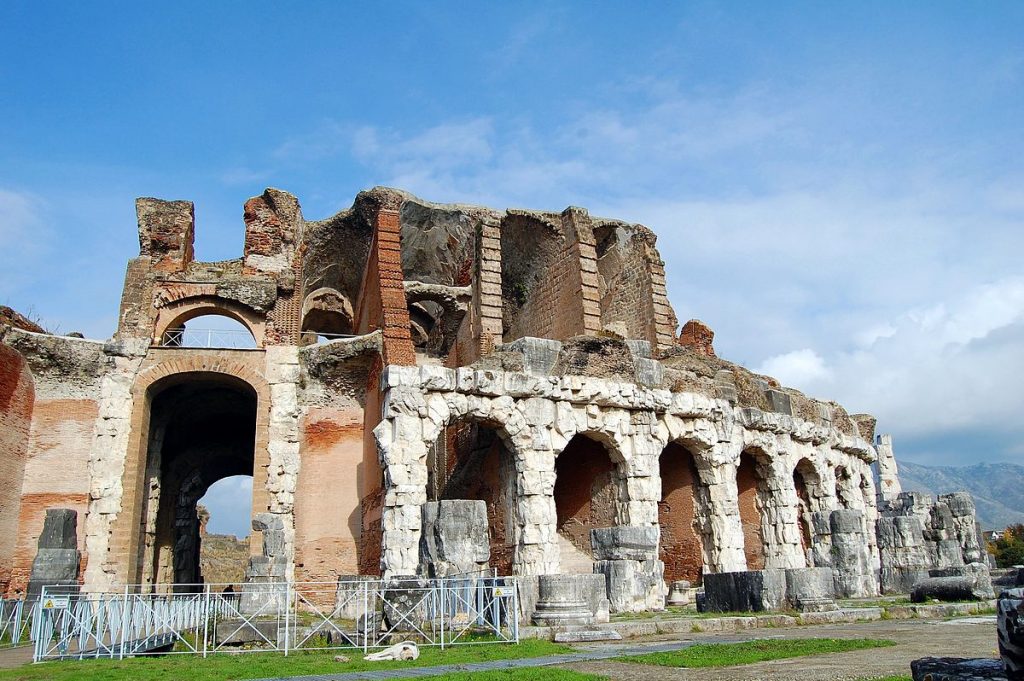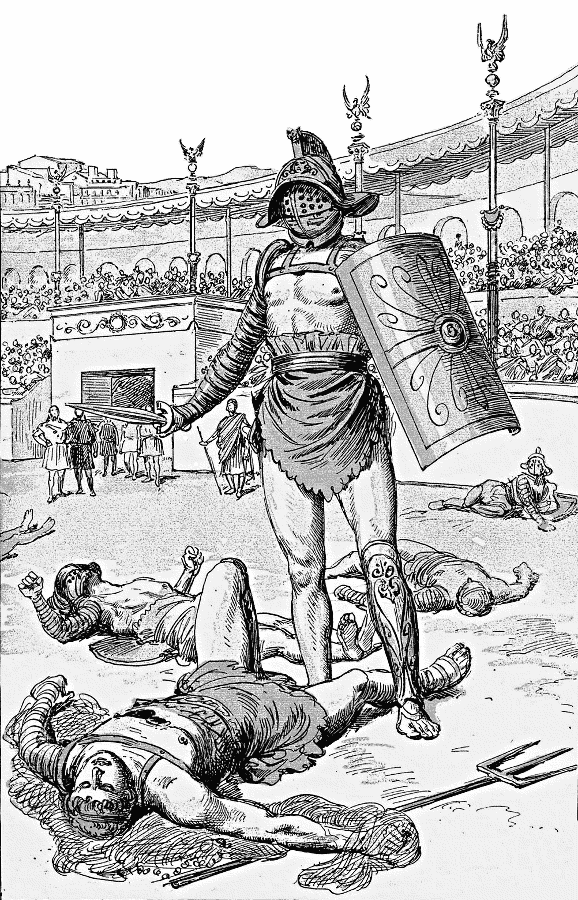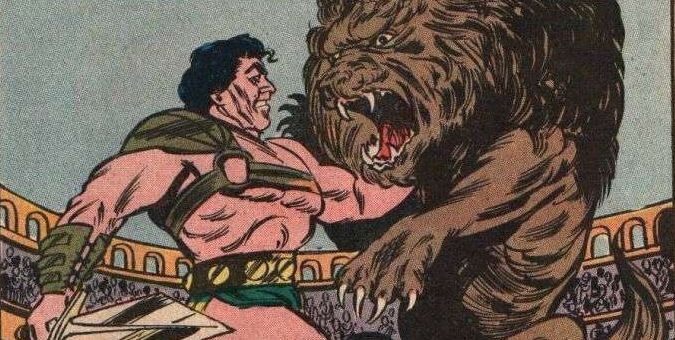For those who enjoy a bit of historical pop culture, the city of Capua is probably all too familiar due to its association with Spartacus and slave rebellions. Founded during the 6th or 8th centuries BCE, Capua was in the region of Campania. Campania was a prosperous and wealthy region, valued for its lush countryside. Capua itself among many things was a centre for the training and housing of gladiators and produced some of the greatest gladiatorial sensation of all time.

The Amphitheatre of Santa Maria Capua Vetere by Dom De Felice Licensed under CC BY-SA 3.0
Spartacus and the Third Slave War
In 73BCE Spartacus, a Thracian gladiator led a band of fellow gladiatorial slaves into what became known as the Third Slave War. It was not the first time in Roman history that the slave class took up arms against the state. It began in the gladiator’s mess hall in Capua, where 70-80 of them armed themselves with ‘choppers and spits seized from a kitchen’ and overthrew the guards. Now out, they managed to acquire proper weaponry. Although the Roman military pursued the rebellion, Spartacus and his army managed to escape. From here, the slave forces grew over time to reach vast numbers of 70 -120,000 men, all fighting in a series of expeditions sent out by Rome to stop them. To the great concern of Rome, these battles continued for almost three years.
Over this period, the slave army had sacked at least four major towns and had won at least nine battles. Many of these men had seen previous military training and were causing Rome some serious problems! The battles also took place all across Italy; however, it was the battle in Lucania that was Spartacus’ last. He was cut down in his attempt to kill the Roman military general, Crassus.

We learn of these events from the ancient writers Plutarch, Appian, and Sallust. Plutarch provides a base structure for the events of the Third Slave War, with the writings of Appian and Sallust allowing for a more vibrant, fleshed out account of this event in Rome’s history. This is very much a summary of the events, and I would recommend further reading to get a fuller picture of the strategies used, and full impact Spartacus and his army had at this time.
The Amphitheatre of Capua and surrounding museums
Archaeological remains of Capua’s gladiatorial history are still present today, with Santa Maria Capua Vetere boasting the second largest amphitheatre in Italy after Rome’s Colosseum. The Amphitheatre of Capua (Anfiteatro Campano) is an impressive ancient site without the hustle and crowds of its big brother Colosseum. It was established by Augustus in the first century BC and is said to have seated approximately 60,000 spectators. This amphitheatre is where Spartacus fought as a gladiator.
The entry ticket to the amphitheatre also provides entry to the nearby Gladiator’s Museum (Museo dei Gladiatori). It is a modest museum that houses a selection of archaeological material and reconstruction models to give a bit more history to the site. If you still want to soak up the rich history of Capua, there is also the Capua Archaeological Museum (Museo Archeologico dell’Antica Capua) not too far away. Something to remember is that you will need to purchase your ticket for this museum back at the amphitheatre. The museum ticket does however also include entry to the nearby 2-3rd century AD Roman mithraeum, a shrine to the god Mithras: a popular god among the Roman military. Plenty there to make the trip worthwhile.
To find out more: Timetravelrome.
Author: written for Timetravelrome by Meaghan Zarb.
Sources:
Plutarch, Life of Crassus, 8-11.
Appian, Civil Wars, 1.116-120.
Sallust, The Histories, 3.64-66.
Nic Fields, Spartacus and the Slave War 73-71BC: A gladiator rebels against Rome, Oxford, Osprey Publishing Limited, 2009.
M. Cary and H.H Scullard, A History of Rome: Down to the Reign of Constantine, 3rd ed., Hampshire, The Macmillian Press Ltd, 1975.
Header photo: Spartacus from the From Blue Beetle. Picture in Public domain.


